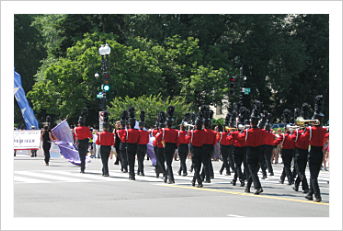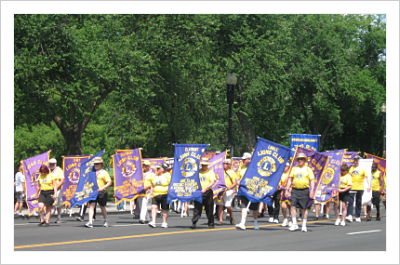
George Bellows,
Madeline Davis, 1914, Lowell and Sandra Mintz
Quick! Think “George Bellows” (1882-1925) and what immediately comes to mind?
Yes, the fighting between the muscled boxers, the shadows, the lighting, the crowds, the smiling, cheering and sinister-looking men who surround the ring, but George Bellows painted much more than just men in competition.

George Bellows,
Club Night, 1907, National Gallery of Art, John Hay Whitney Collection
An exhibition of 130 of his paintings, lithographs, and drawings which span subjects ranging from portraits to fiery preachers to New York tenements opened Sunday at the National Gallery of Art, the first Bellows retrospective in 30 years.
The large show fills nine rooms, and the works are arranged thematically according to his early works, city and river life, the construction of the Pennsylvania Railroad Station, seascapes, work and leisure, and, quite importantly, portraits of the working poor and their displacement.

George Bellows,
Paddy Flannigan, 1908, Erving and Joyce Wolf
Bellows's wife, Emma, and their daughters figure prominently in a gallery about women, his relationship with his wife, a testament to enduring love.

George Bellows,
Emma in the Purple Dress, 1919, Los Angeles County Museum of Art, Gift of Raymond J. and Margaret Horowitz
He painted many other women, too, and the horrors of World War I.
In disturbing and graphic scenes, Bellows portrayed the occupation of Belgium by the Germans who slaughtered the people, used them for naked shields, and maimed their children, images which shock and haunt viewers, and stand as reminders of man’s constant inhumanity.

George Bellows,
The Barricade, 1918, Birmingham Museum of Art, with funds provided by the Harold and Regina Simon Fund, the Friends of American Art, Margaret Grisham Livingstone, and Crawford L. Taylor, Jr.
Bellows reluctantly supported the war and his art was used to encourage the American people to buy Liberty bonds. (Contrast his responses to war with those of Joan Miro in the exhibition in the East Building.)

George Bellows,
The Germans Arrive, 1918, Ian and Annette Cumming. This painting, according to Wikipedia, is based on an actual event. When Bellows was criticized by another artist for painting a scene he did not witness firsthand, Bellows replied he was unaware that Leonardo da Vinci had "had a ticket to paint the Last Supper."
His breakaway style dramatically emphasizes human curves, the lines of landscape, and keen grasp of lighting and its effects. His love of sports shows up in many of his skillful renderings of male athletes.
Standing back and admiring his compositions, one is struck by the symmetry and importance of the designs and lines: Trees, buildings, bridges, and the ground often direct attention to the main subject: people.
But look in the distance and what do you see?

George Bellows,
Blue Morning, 1909, National Gallery of Art, Chester Dale Collection
He was born in Columbus, Ohio where he was bullied as a child in school. Later, at The Ohio State University, Bellows played basketball and baseball, drew illustrations for the yearbook, and rejected an offer to play ball for the Cincinnati Reds so he could take off for New York and pursue an art education. Not what his father wanted his only child to do, but better your heart than your head.
Bellows died at age 42 from the effects of appendicitis, leaving behind so many strong renderings on so many different subjects, viewers can only guess about his output had he lived as long as his contemporary and friend, Edward Hopper, born the same year as Bellows and living until age 85.
In addition to the 336-page catalogue, the National Gallery's shops have for sale a Bellows mug, calendar, postcards, boxed notes, a film, and books including a new children's book, George Bellows: Painter with a Punch! Also, an audio tape for $5 is available for the tour.
From the National Gallery in Washington, D.C. the show travels to the Metropolitan Museum in New York (November 15) and then, the Royal Academy of Arts in London (March 16, 2013).
For their sponsorship of this exhibition the people of the United States and guests are grateful to Nippon Television Network Corporation, The Terra Foundation for American Art, the Henry Luce Foundation, the Cordover Family Foundation, and The Mr. and Mrs. Raymond J. Horowitz Foundation for the Arts.
Exhibition events
Talks:
Eric Denker
June 20–22, 27, 28, 30, 2 p.m.
Diane Arkin
July 25, 30; August 3, 6, 7, 11 a.m.
West Building Rotunda, Main Floor
50 minutes
Two piano concerts
Both by Leslie Amper
June 24 4 p.m. and 6:30 p.m.
East Building Concourse, Auditorium
1.Ciné-concert: 4 p.m.
Music for the silent film, The New York Hat, and lecture
2. Concert: 6:30 p.m.
Music by Gershwin, MacDowell, and other composers
Film:
Produced by the Gallery, this film uses original footage shot in Manhattan and Maine. The film will be screened in the West Building Lecture Hall daily beginning at noon, and in the East Building Auditorium Saturdays at 11:30 a.m., with minor exceptions.
Made possible by the HRH Foundation.
Public Symposium
Friday, October 5, 12–5 p.m.
Saturday, October 6, 1–5 p.m.
Illustrated lectures by noted scholars
What: George Bellows
When: Now through October 8, 2012, Monday through Saturday, 10 a.m. - 5 p.m., Sunday, 11 a.m. - 6 p.m.
Where: National Gallery of Art, West Building, Washington, D.C., between 3rd and 9th streets at Constitution Avenue, NW
How much: No charge
Metro stations: Judiciary Square, Navy Memorial-Archives, or the Smithsonian





















.jpg)































